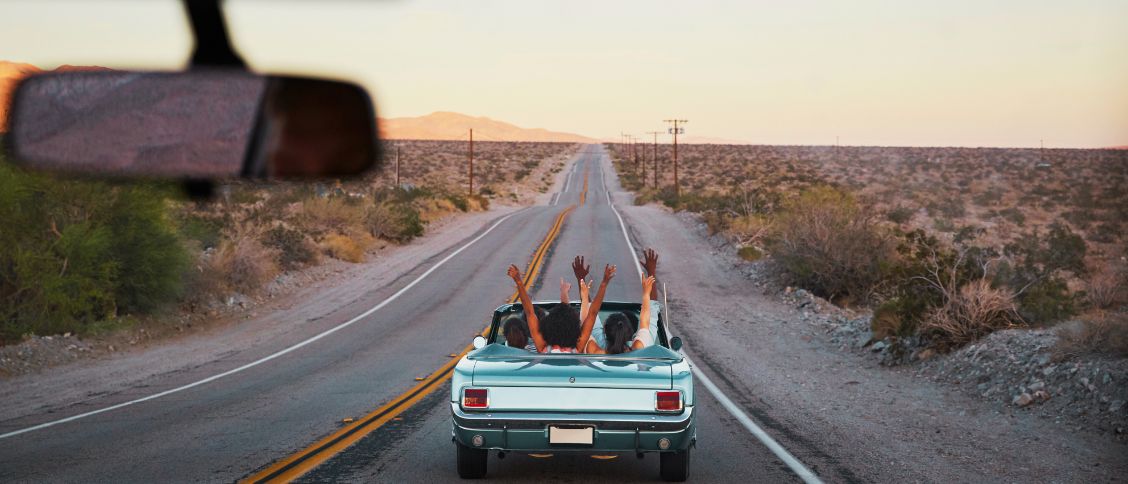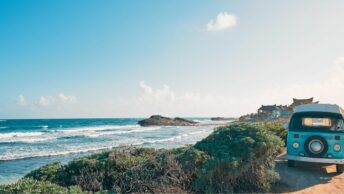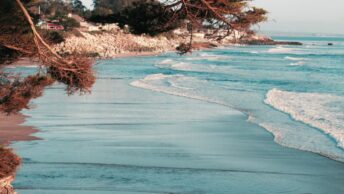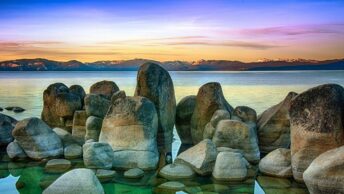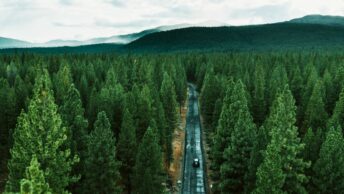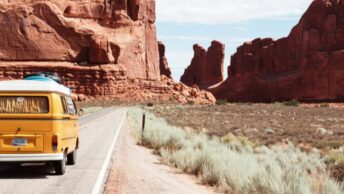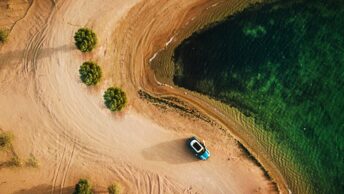Embarking on a road trip from Texas to California is an adventure that promises to be full of excitement, diversity, and breathtaking scenery. The journey is long, but the sights and experiences make it all worthwhile. From the dusty deserts of West Texas to the towering peaks of the Sierra Nevada Mountains in California, there is much to see and explore on this epic cross-country road trip.
So pack your bags, fuel up your vehicle, and hit the road on this unforgettable journey through the heart of America.
Texas to California Stats
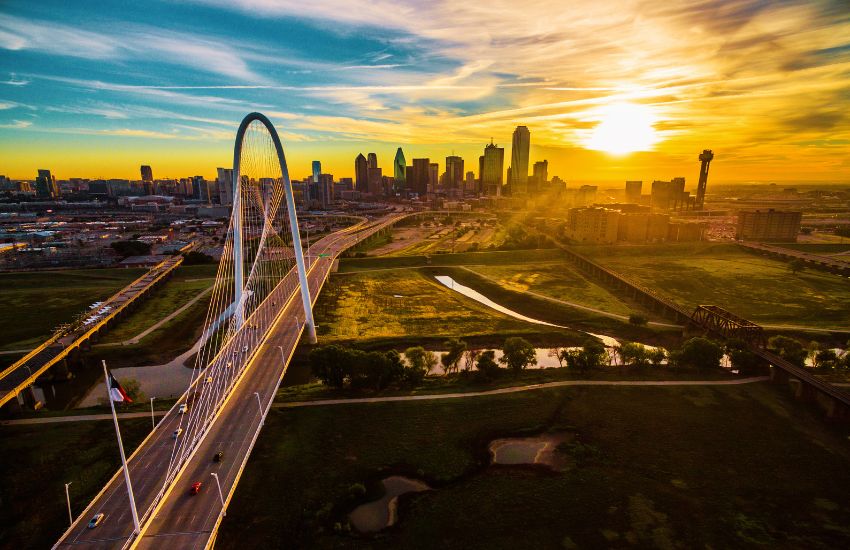
Km/Miles
The distance between Texas and Fresno, California, will depend on where you start and your chosen route. If you’re from Houston, it’s 1763 miles via I-10 and 1792 miles by I-40 W. From Dallas, it’s 1558 miles (I-40) and 1653 miles (I-10). Driving from San Antonio, you’ll cover 1570 miles via I-10; from Austin, it’ll be 1595 miles.
Hours
The hours you must drive for your Texas to California road trip can range from 23 to 30 hours (stops not included). Hitting the road for this adventure is a serious journey, so make sure you make necessary stops whenever needed.
Recommended Road Trip Time
Prepare for a week-long journey at least, or take your time and soak in the experiences for a 10-day long Texas to California road trip. It won’t be a short trip, and you must be someone who actually enjoys cruising in your vehicle.
Checkpoints
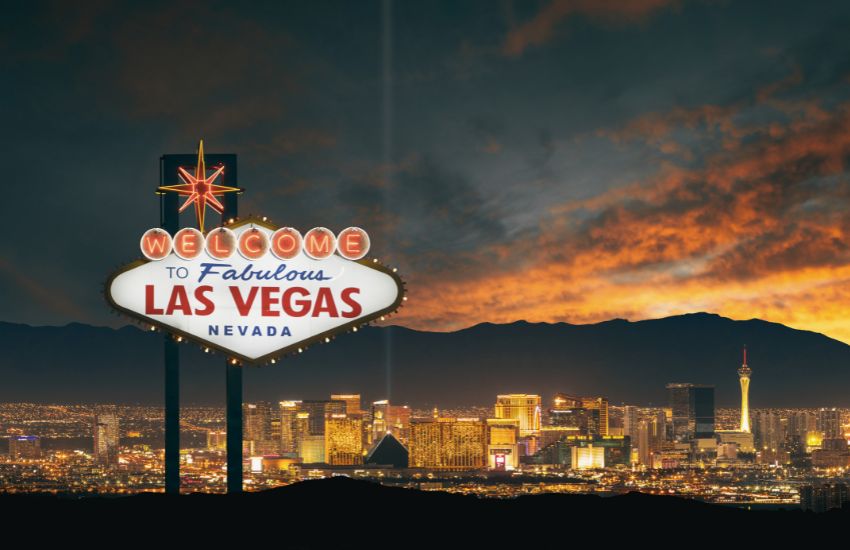
Here are a few of the popular checkpoints between Texas and California:
- Big Bend National Park: The park covers over 800,000 acres of land and includes various natural features such as canyons, desert landscapes, mountains, and the Rio Grande River. It is also home to a diverse array of wildlife, including over 450 species of birds and several species of desert animals.
- Carlsbad Caverns National Park, New Mexico – a stunning natural wonder with over 100 caves to explore, including the famous Carlsbad Cavern.
- Saguaro National Park: Named after the saguaro cactus native to the Sonoran Desert that can grow up to 70 feet (21 meters) tall, Visitors can also learn about the history and culture of the region, including the Native American Hohokam people who lived in the area for thousands of year and enjoy the great outdoors as much as they want. After exploring the park, don’t forget to try some local delicacies in Tucson
- Las Vegas, Nevada – the world’s entertainment capital, with plenty of casinos, shows, and other attractions to keep you busy.
- Joshua Tree National Park, California – a unique desert landscape featuring stunning rock formations and many hiking opportunities.
States you drive through
Whether you take the I-10 or I-40 route, there are four states you’ll drive through during your Texas to California road trip: Texas, New Mexico, Arizona, and California.
Most Scenic Route
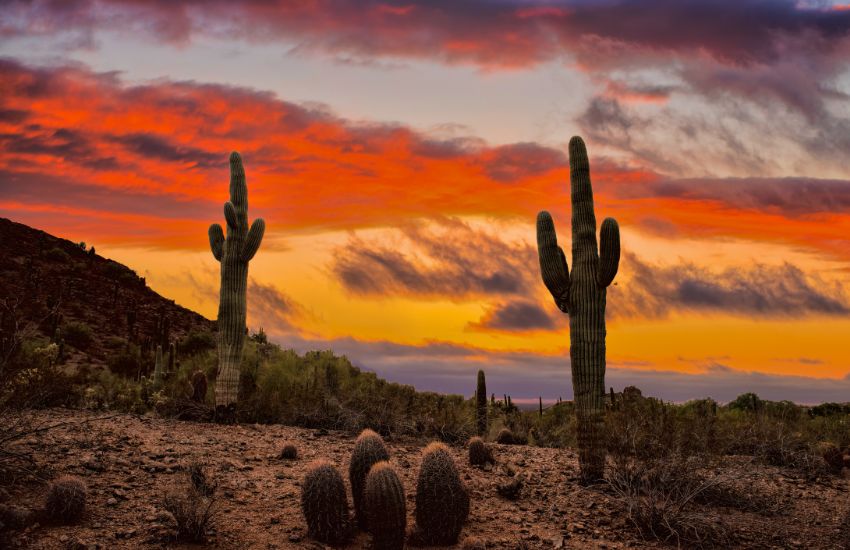
The most scenic route for your Texas to California road trip is the I-10 route. From downtowns to beautiful landscapes and vast national parks, you’ll bump into numerous gems such as the Hill Country region, known for its rolling hills, limestone cliffs, and wildflowers, the Guadalupe Mountains National Park, Big Bend National Park, and the Chihuahuan Desert. However, don’t be surprised to see nothing but the empty desert for some parts of the ride.
Safest Route
Both the I-10 and I-40 routes are well-maintained and well-lit during dark. There are also plenty of gas stations. However, the I-10 can get quite hot in desert areas, so stay hydrated and keep your car well-maintained.
Planning a Road Trip?
Read our Guides
LA to Lake Tahoe Road Trip Guide and Itinerary
Road Trip to Utah from California
How Often Should You Let Your Car Rest on A Road Trip?
Is My Car Too Old for A Road Trip? A Checklist
Road Trip Distance Coast to Coast in USA
San Francisco to Lake Tahoe 2-Day Road Trip
Sacramento to Lake Tahoe Road Trip Intinerary
San Fran to Monterey Bay Road Trip Guide
Texas to California Road Trip Map
Texas to California: Route l-10
Texas to California: Route l-40
Where to Start in Texas
You can take four major cities as your jump-off point: Houston, San Antonio, Dallas, and Austin. Choose one closest to your current location, or start on one that you find most interesting.
You’ll Also Like
Do you need a Passport for Tijuana?
Places to See in Barcelona in 2 days
Things to do at Niagara falls NY for Couples
Where to end in California
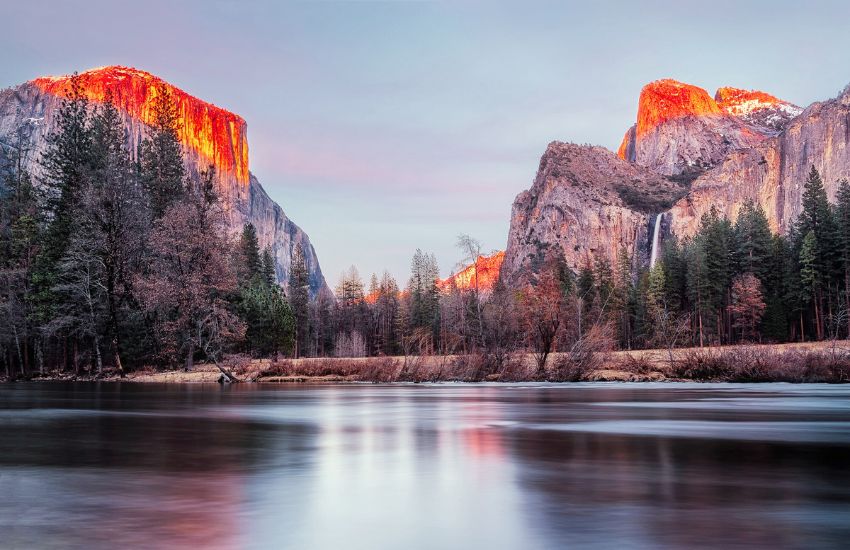
The final destination for your Texas to California road trip will depend on your preferences: San Diego, San Francisco, and Yosemite.
- Los Angeles: Los Angeles is a large, sunny city in California known for its entertainment industry, music scene, and famous attractions like the Hollywood Walk of Fame and Griffith Observatory.
- San Diego: With over 70 miles of pristine coastline, San Diego is the best option to end your Texas to California road trip if you’re a beach bum. There are plenty of spots to bask under the sun and relax while sipping your mojito, reading a book, or just getting equally baked. The food and culture in this city are so diverse that your mind and tummy won’t ever go hungry.
- San Francisco: It is known for its cultural diversity, vibrant nightlife, hilly terrain, and iconic landmarks like the Golden Gate Bridge and Alcatraz Island. San Francisco’s rich history and thriving art scene also emphasize social justice. So if you’re a history buff, you’ll love wandering around.
- Yosemite: The outdoor enthusiast’s haven. A famous UNESCO world heritage site, Yosemite National Park is a protected area renowned for its iconic natural features, including granite cliffs such as El Capitan and Half Dome, and waterfalls such as Yosemite Falls, which is one of the tallest waterfalls in North America.
You’ll Also Like
Things to do in Nashville for Couples
Best Weather in Europe in November and December
Is Baja in the US or Mexico?
Which Route to take
The best route for your Texas to California road trip is the I-10 journey. It’s the quickest way while feeding the wanderer in you with the natural treasures and beautiful experiences you’ll encounter throughout the ride.
What to see via I-10
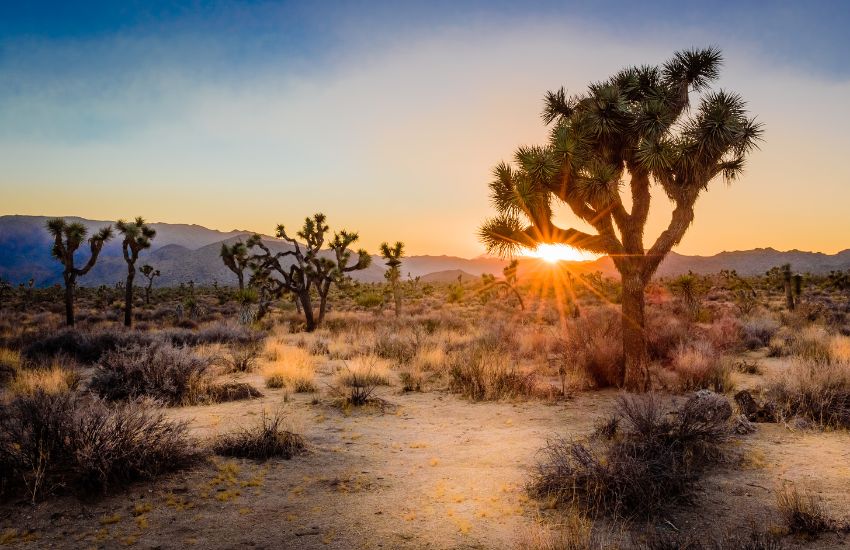
Amistad National Recreation Area
More than 360 miles away from Houston, and after roughly six hours of driving through I-10 and taking US-90 from San Antonio, you can stop at Amistad National Recreation Area. This national reserve offers excellent outdoor activities like hiking, kayaking, and bird watching. You can also plunge into the waters to freshen up after a long drive and recharge with food. Here, you’ll also see the ancient rock arts from millennials ago by the Lower Pecos area or join a ranger-led tour.
Big Bend National Park
Following US-90 for another four hours and ten minutes and turning left to US-385 S, you’ll reach the Big Bend National Park. It’s a hidden treasure that doesn’t get the attention it deserves. The breathtaking views of the vistas like the Chisos Mountains, Santa Elena Canyon, and Boquillas Canyon will mesmerize you.
Wildlife is also rich, and you might spot animals such as coyotes and black bears during your stay. Stargazing at Big Bend National Park is one of the most magical experiences you’ll have during your Texas to California road trip. If you love hiking, pack your gear- the trails will call on you, and it’s impossible to resist!
Carlsbad Cavern National Park
Time to drive again for a little over five hours. Pull back to US-90, cruise at US-385 N, and head for US-285 at Fort Stockton. Take a left at Black Village Road and a right at NM-7 W to reach Carlsbad Cavern National Park and its massive underground limestone cave system.
This UNESCO World Heritage Site is also a cradle to diverse landscapes, including high deserts and mountains. You can opt for a guided tour or go for self-led adventures. Spot mountain lions, marvel at the stalagmites and stalactites, or go for a hike where you’ll see the beauty of the Chihuahuan Desert.
Guadalupe Peak (Optional)
Head back to US-180 W and turn right to US-62 W until you’re at Pine Canyon Road. Take a right turn, and you’ll be at Guadalupe Peak, more than half an hour away. It’s the highest peak in the state at 2,667 MASL and is part of the Guadalupe National Park.
Taking this adventure is one of the most challenging parts of a Texas to California road trip, but a must for avid hikers. You need some experience to survive this one since the trail is complex and will take around 8 hours to complete. You’ll be rewarded with majestic views, and if the sky’s clear, you can even see Mexico from the top!
Las Cruces
Two and a half hours from Guadalupe NP, you’ll find Las Cruces. Surrounded by the Organ Mountains to the east and the Doña Ana Mountains to the north and west, the city is famous for its mountain vistas and historic downtown district. You can visit the Zuhl Museum at New Mexico State University and see fossils, minerals, and artifacts. The Old Mesilla also has picturesque vibes in its neighborhood, or join a wine tour at the Mesilla Valley.
White Sands National Park
Continue driving along US-70 E for under an hour, and you’ll reach White Sands National Park. With the sun striking the fine gypsum crystal, the white dunes here shimmer, giving it;’s beauty a unique allure.
You can explore the dunes by hiking, sledding, or simply admiring the views from the park’s many scenic overlooks. There are also opportunities for stargazing, and wildlife watching, as the park is home to various desert flora and fauna, including lizards, snakes, and rare species such as the sand-colored whiptail.
Kartchner Caverns State Park
Drive back to downtown Las Cruces and hit I-10 W towards Deming for another 3 hours and 40 minutes, taking a left turn at AZ-90 S to get to Kartchner Caverns State Park. This stop requires you to join a guided tour lasting an hour and a half. It is the way of the state to protect the caves from possible ecosystem damage due to human activity.
In this tour, you will learn about the history of the place, its geological formations, and the native floras and fauna in the area. It will also take you through various cave systems that feature a unique series of formations.
Saguaro National Park
You’ll need to drive for roughly an hour before your next stop. Return to I-10, exit at 275 for Houghton Road, and turn right at S Houghton Road. Continue cruising until you reach E Valencia Road and take a right again. Go straight until you see S Old Spanish Trail on your left, and take a turn. Just drive until you spot the park sign on your right. This is the east side of the park, the Rincon Mountain District.
The Rincon Mountains are part of the highlights that leave most visitors marveling. This area also has a rich diversity of vegetation and wildlife, and there are more than 130 miles of hiking trails in this district, and you can conquer as many as you want. Horseback riding and ranger-led tours are also available, and if you want to stay in the comfort of your car, there are also scenic drives you can follow.
Picacho Peak State Park
Driving through I-10 W for another hour and turning right at Picacho Peak Road, you’ll get to Picacho Peak State Park. The park covers an area of approximately 3,747 acres and offers a range of activities for visitors to enjoy. These include hiking, picnicking, camping, and wildlife viewing. One of the park’s most popular hiking trails is the Hunter Trail, which leads to the summit of Picacho Peak and offers stunning views of the surrounding desert landscape.
Yuma Proving Ground (optional)
Hitting the road for another 3 hours and 30 minutes via I-10 and exiting at 199 for I-8 W, then taking a right turn at US-95, you’ll reach the Yuma Proving Ground. If you’re fond of anything military, you’ll enjoy a detour in this open-air museum to see WWII memorabilia like cannons and tanks. You can also opt for a guided tour discussing the history of the place or visit the nearby Yuma Territorial Prison State Historic Park. This former prison operated from 1876 to 1909.
Joshua Tree National Park
If you have a stop at Yuma Proving Ground, heading north back to I-10 and taking a left turn until you reach 168 for Cottonwood Springs Road, it will take 2 hours and 20 minutes to get to Joshua Tree National Park. Now, If you’re coming directly from Picacho Peak State Park via I-10, it’s a 4-hour and 30-minute drive.
The park’s name comes from the iconic Joshua tree, a unique tree species native to the Mojave Desert. One of its most popular attractions is the fantastic rock formations throughout the park, including the famous “Joshua Tree” rock formations. Various desert wildlife, including bighorn sheep, coyotes, rattlesnakes, and numerous bird species, can also be spotted in the area. If you love stargazing, its remote location and clear skies made Joshua Tree State Park an International Dark Sky Park.
Los Angeles
Coming from Joshua Tree National Park and following I-10, you’ll inevitably end up in Los Angeles after two and a half hours.
San Diego
From LA, you can go down to San Diego via I-5 S, driving for around a couple of hours.
Yosemite
Or, after reaching Los Angeles, head north to Yosemite National Park through I-5 for a 5-hour journey. There’s no shortage of things to do here, especially if you love the great outdoors.
Yosemite has hundreds of miles of hiking trails, ranging from strolls to strenuous multi-day backpacking trips. The most popular hikes include the Mist Trail to Vernal, Nevada Falls, and the John Muir Trail. Rock climbing is also a staple for visitors. The granite cliffs are a mecca for rock climbers, with some of the best climbing routes in the world. There are options for climbers of all levels, from beginners to experts.
You’ll Also Like
Most Romantic Places in French Riviera
How Do You Get to North Captiva Island Florida?
Can You Drink or Smoke on The Beach in Hawaii?
Differences between Niagara Falls and Horseshoe Falls
Where to stay
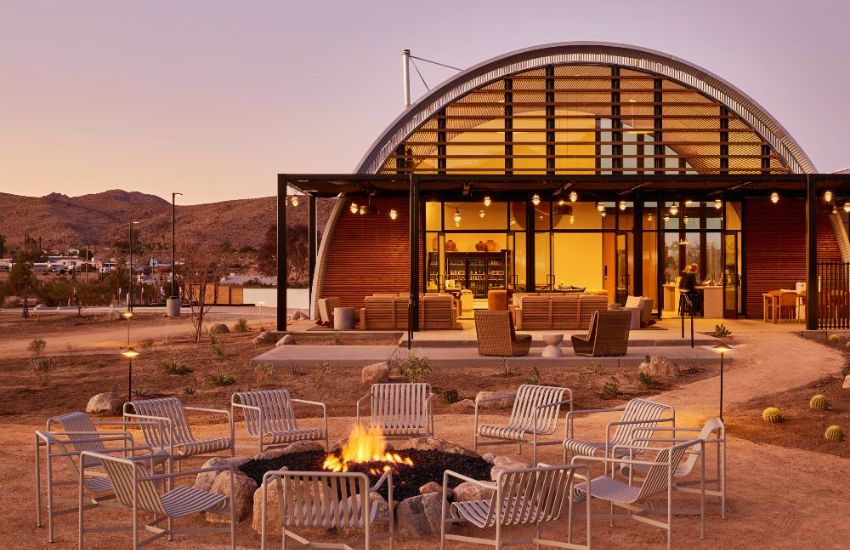
Where to stay during your Texas to California road trip depends on where you stop to rest for the night. Here are some of our recommendations.
Amistad National Recreation Area
- Camping:
There are five campgrounds in Amistad National Recreation Area: 277 North, Spur 406, Rough Canyon, Governor’s Landing, and San Pedro. They’re available on an FCFS basis and complete with picnic tables, volt toilets, and fire grills, but only the Governor’s has running water. RVs are welcome, but there are no hookups, and if you own a big one, San Pedro is the spot for you.
- Accommodations:
Lodging is a bit far, such as the Texas Lodge, American Campground, and Champions Inn. It’s best to just camp out at Amistad National Recreation Area.
Big Bend National Park
- Camping:
You can choose from three campgrounds, an RV park or a backcountry campground. All of them require reservations in advance. Chisos Basin Campground is the closest to the Chisos Mountains, Rio Grande Village Campground is on the east side of the NP, while Cottonwood is on the west side. Stay at the heart of the wilderness and stay at Maveric Road or River Road.
- Accommodations:
Chisos Mountains Lodge within the park is the best place for a good night’s rest if you want to stay in a comfy room. The next nearest are Paisano Village RV Park and Inn, and the Big Bend Resort and Adventures.
Carlsbad Cavern National Park
- Camping:
Backcountry camping is the only option if you want to stay overnight near Carlsbad Cavern National Park, which requires a permit you can get at the visitor center when you arrive. There are no campgrounds within the limits of the park itself. You can camp at the Rattlesnake Canyon, Sunset Reef, Mile 10, and Chosa Campground.
- Accommodations:
Whites City Cavern Inn is the nearest lodging you can book if you stay overnight at Carlsbad Cavern National Park. Other than that, you’ll have to cruise through the National Parks Highway towards 285 for more options.
Guadalupe Mountains National Park (Optional)
- Camping:
There are 35 sites you can camp at, 20 of which are for tents, while 13 are exclusive for RVs at the Pine Springs Campground. Dog Canyon has 15, 9 for tents and 4 for RVs. Both don’t have hookups, showers, or dump stations.
Las Cruces
- Camping:
There are several camping and RV parks in Las Cruces, like the Siesta RV Park, or you can drive out of downtown to Aguirre Spring Campground or Cactus Patch Campground to pitch your tent.
- Accommodations:
There’s literally plenty of lodging at Las Cruces, from budget-friendly ones like Days Inn to high-end vacation home rentals. You can also check out places close to I-10, like Econo Lodge Las Cruces and Holiday Inn Express and Suites.
White Sands National Park
- Camping:
You can’t camp at White Sands National Park. They used to offer backcountry camping, but as of this writing, it’s unavailable due to maintenance. You must drive to Oliver Lee State Park or Lincoln National Forest to camp out for the night.
- Accommodations:
You can check in at IHG Army Hotels Buildings for good value and comfy amenities. Super 8, Staybridge Suites, and TownPlace Suites are also just at the mouth of Hwy 70.
Kartchner Caverns State Park
- Camping:
Reserve your spot through the Arizona State Parks Reservations Desk. You can access hookups, showers, and dump stations during your stay.
- Accommodations:
You can spend the night at one of the cabins in the park. You can click here to secure your room. You can also head back to I-10 for Motel 6 Benson or Comfort Inn Benson, right across the street.
Saguaro National Park
- Camping:
There are six designated campgrounds in Saguaro National Park: Manning, Spud Rock Spring, Happy Valley Saddle, Juniper Basin, Grass Shack, and Douglas Spring. If you want to go backcountry camping, you must get your permit here. You’ll also need to hike to reach these campsites.
- Accommodations:
The nearest stays at Rincon entrance are Desert Dove Bed and Breakfast, a cottage rental, and a Tucson retreat house.
Picacho Peak State Park
- Camping:
There are 85 sites in Picacho Peak, all with electricity but no hookups or water supply. You can secure your spot here.
- Accommodations:
You can stay at Picacho Peak RV Resort or enjoy the coziness of Picacho/Tucson NW KOA Journey.
Joshua Tree National Park
- Camping:
Five hundred campsites are open for reservation, and some campgrounds might be closed during summer due to unforgiving heat. Some are open on an FCFS basis, like the Belle, Hidden Valley, and White Tank campgrounds.
- Accommodations:
AutoCamp Joshua Tree is the best place to stay, but expensive. Many alternatives exist if you drive down through I-10 for a few minutes.
You’ll Also Like
Differences between Niagara Falls and Horseshoe Falls
Best Nightlife in Europe in December
Most Kid-Friendly Countries to Visit
Best European Cities to Visit in December
When is the Best Time for a Texas to California Road Trip?
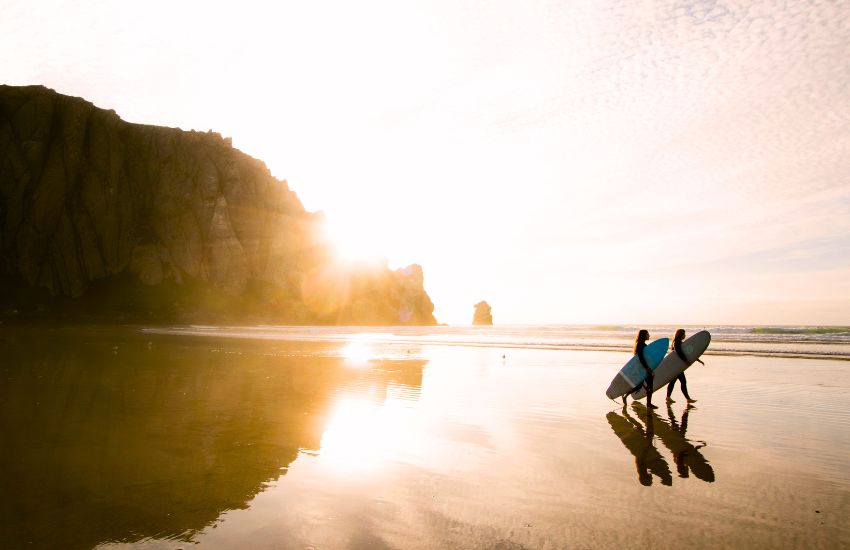
The best time for a Texas to California road trip depends on various factors, such as personal preferences, weather conditions, and traffic.
The weather can significantly impact your road trip experience. The best time to drive from Texas to California is during the spring or fall seasons when the temperatures are mild, and the weather is generally pleasant. Summers can be scorching hot, particularly in Texas and the Southwest.
July and August are the busiest times for road travel in the U.S. If you’re planning to hit the road during this time, expect to encounter more traffic and longer wait times at popular attractions and rest stops.
California also has many annual events and festivals that can make your road trip more enjoyable. Some popular events include the Coachella music festival in April, the Monterey Jazz Festival in September, and the San Diego Comic-Con in July. Research the calendar of events in California to see if any align with your travel dates.
The cost of gas and accommodations can vary depending on the time of year. The summer months are more expensive due to the high demand, while the winter may offer lower rates.
The best time for a Texas to California road trip is during the spring or fall when the weather is mild and there are fewer crowds. However, you should consider your personal preferences and travel goals when deciding the best time for your road trip.
You’ll Also Like
Best Christmas Beach Vacations for Families and Couples
Best Domestic and International Spring Break Destinations for Families
Best Cheap Vacations for College Students in the USA
Best Cheap Summer Road Trips for College Students
Texas to California Road Trip Itinerary

Here’s a simple itinerary for your Texas to California road trip. Alter the plan as you wish so you make the most out of your journey. Remember, don’t rush. The trip is pretty long, so make stops as you want.
Day 1:
- Amistad National Recreation Area
- Big Bend National Park
Day 2:
- Carlsbad Cavern National Park
- Guadalupe Peak (Optional)
Day 3:
- Las Cruces
- White Sands National Park
Day 4:
- Kartchner Caverns State Park
Day 5:
- Saguaro National Park
Day 6:
- Picacho Peak State Park
- Yuma Proving Ground (optional)
Day 7:
- Joshua Tree National Park
You’ll Also Like
Best Cheap Summer Road Trips for College Students
Cheapest Places to Travel for Students
Best Places to Travel in December on a Budget
What’s the Cheapest Time to Fly to Morocco
Texas to California Road Trip Packing Checklist

Packing for your Texas to California road trip can be confusing AF. To help make the process easier, here are some of the basics you need to have with you during your journey to make it as comfortable and as enriching as possible:
- Maps or a GPS device
- Driver’s license and other identification documents
- Car insurance and registration papers
- Spare car key
- Roadside emergency kit (jumper cables, tire iron, spare tire, etc.)
- First aid kit
- Portable phone charger and car phone charger
- Snacks and non-perishable food items (e.g., trail mix, granola bars, canned goods)
- Plenty of water bottles or a hydration system
- Cooler or insulated bag to keep food and drinks cold
- Reusable utensils, plates, and cups
- Paper towels and napkins
- Trash bags
- Sunscreen and sunglasses
- Hat or visor
- Lightweight, breathable clothing
- Rain jacket or poncho
- Comfortable shoes for walking and hiking
- Beach towels and swimsuits (if you plan on visiting the beach or a pool)
- Camping gear (if you plan on camping along the way)
- Sleeping bags and pillows
- Tent and tent poles
- Camp stove and fuel
- Cooking utensils and pots/pans
- Cooler or ice chest
- Water filters or purification tablets
- Headlamp or flashlight
- Bug spray and citronella candles
- Toiletries (toothbrush, toothpaste, soap, shampoo, deodorant, etc.)
- Medications and any necessary medical equipment
- Hand sanitizer and disinfectant wipes
- Travel-sized laundry detergent
- Camera and extra batteries
- Books, magazines, and other entertainment
- Travel pillow and blanket
- Cash and credit/debit cards
- Portable Bluetooth speaker
Pack according to the season and weather conditions of the places you plan to visit. Additionally, it’s essential to research and plan ahead for any necessary permits or reservations for specific parks, campsites, or activities.
We hope we have inspired you to plan your adventure and explore the wonders of the American West. The journey offers something for everyone, from stunning natural landscapes and national parks to vibrant cities and unique cultural experiences.
Whether you prefer to take the well-trodden path or venture off the beaten track, there are endless opportunities to discover and explore.
Happy Road Trippin’!
FAQs
How to plan a road trip from Texas to California?
Tick out these steps to effectively plan for your Texas to California road trip:
– Determine the route you want to take.
– Calculate the time and distance of your journey.
– Identify the cities and towns you want to visit and determine how long you want to stay in each place.
– Create a budget for your trip.
– Make sure your vehicle is in good condition before you leave.
– Pack your bags with the essentials you will need on your trip, such as clothing, toiletries, and electronics.
Most importantly, remember to have fun and capture the memories on your camera!
Road trip from Texas to California, what to see?
Here are some of the best stops for your Texas to California road trip:
– Amistad National Recreation Area
– Big Bend National Park
– Carlsbad Cavern National Park
– Guadalupe Peak (Optional)
– Las Cruces
– White Sands National Park
– Kartchner Caverns State Park
– Saguaro National Park
– Picacho Peak State Park
– Yuma Proving Ground (optional)
– Joshua Tree National Park
Learn more in our Guide for a Texas to California Road Trip.


